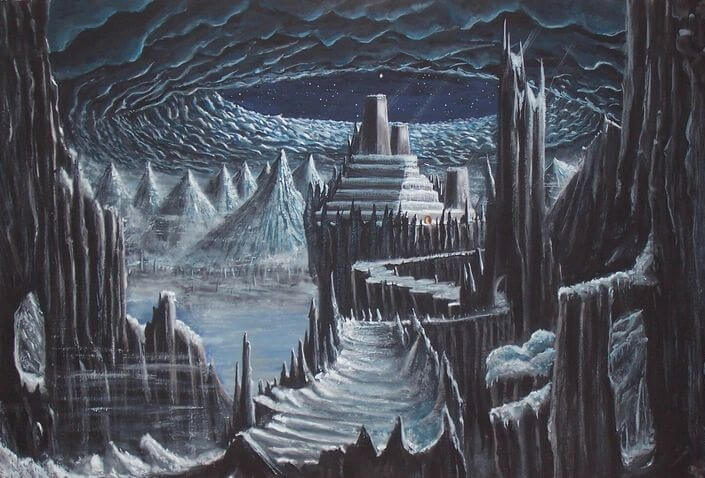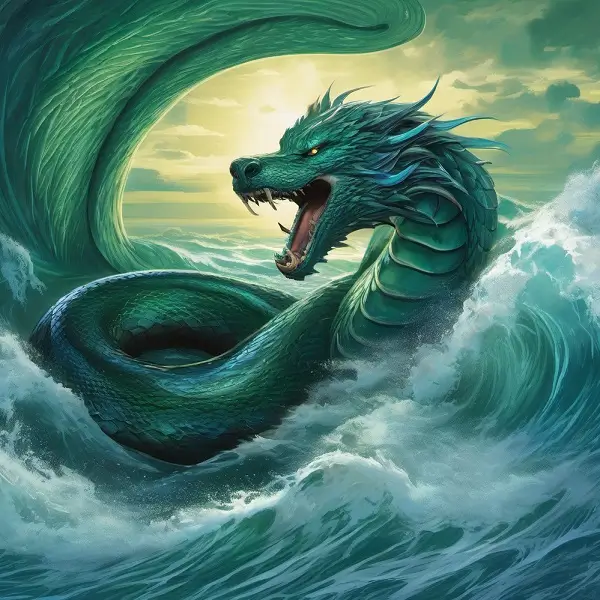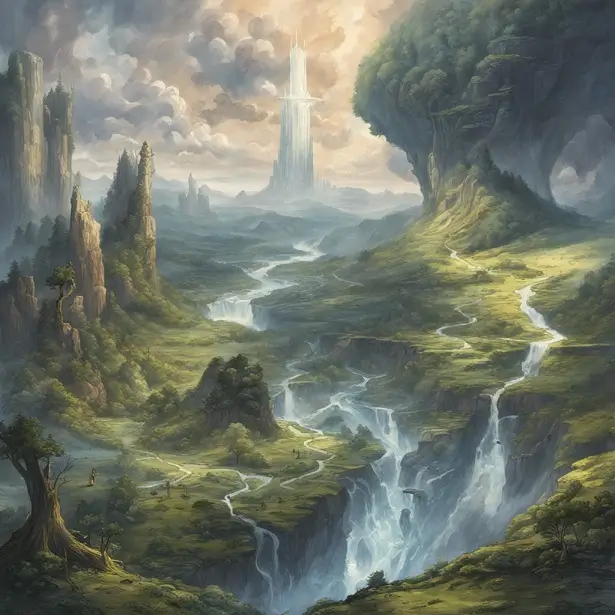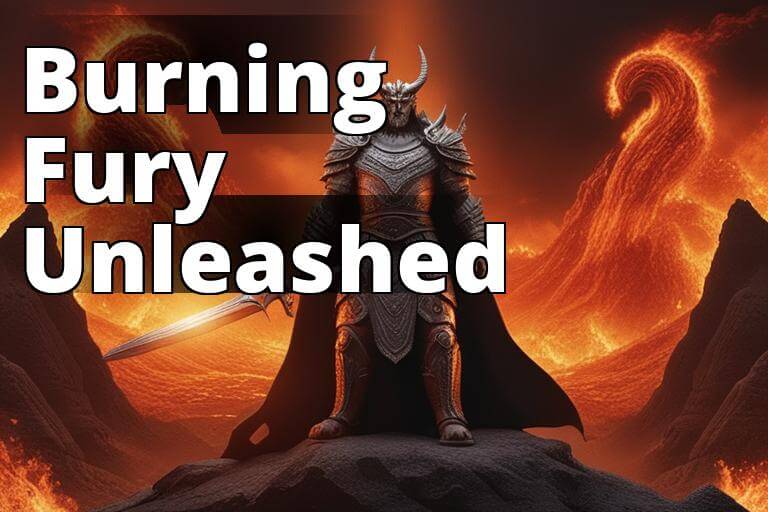Helheim is one of the nine worlds in Norse mythology and is known as the underworld, the place where the dead go. Ruled over by the enigmatic and fearsome goddess Hel, it is located in the world of Niflheim, on the lowest level of the Norse universe. It is a cold, dark, and misty place, where the dead go to spend eternity.
Those who did not die in battle or were not chosen by Odin to go to Valhalla were destined to go to Helheim.
Helheim is a significant part of Norse mythology and has been featured in various modern works of fiction, including movies, TV shows, and video games. Its portrayal in modern culture is often different from its original depiction in Norse mythology.
Despite its similar name, Helheim was actually quite different than the Christian concept of Hell.
Key Points
- Helheim was ruled over by the goddess Hel, daughter of Loki
- It was one of several Norse realms of the dead, including Valhalla and Folkvangr
- Myths describe perilous journeys heroes took to access Helheim
- Within its halls, the dead were thought to continue their earthly activities
- No one, not even the gods, could escape once admitted to Helheim
- Helheim was not a place of punishment like Hell, but reflected mundane life
Etymology
The name “Helheim” is derived from Old Norse and means “house of Hel”. Hel, the goddess of the underworld, is the ruler of this realm. The name “Hel” is also believed to be the origin of the English word “hell”. However, the two concepts are not directly related as “Helheim” is not a place of punishment, but rather a place where the dead go to rest.
Creation Myth
According to Norse mythology, Helheim was created by the god Odin and his brothers Vili and Ve. They created the world by slaying the giant Ymir and using his body to form the earth, sea, and sky. As a result of this act, they also created the nine worlds, including Helheim.

Odin the “Allfather”
It is depicted as a cold, dark, and misty realm surrounded by a river of knives, called Slid, and guarded by the giantess Hela, who is the daughter of Loki and the goddess Angrboda.
In Helheim, the dead are believed to be judged by Hela, who determines their fate. Those who die of old age or sickness are said to go to Helheim to rest peacefully, while those who die in battle are taken to Valhalla, where they will fight alongside the gods during Ragnarok.
The Ruler of Helheim – Goddess Hel
The mysterious goddess Hel was the daughter of the notorious trickster deity Loki and the fierce giantess Angrboda. She was born in Jotunheim, the ominous realm of the giants, along with her two infamous monstrous siblings – the writhing sea serpent Jormungandr and the snarling wolf Fenrir. The unstable family line and chaotic nature of these beasts caused great concern among the gods in Asgard. They feared that when the siblings grew up, the trio would bring disaster to the cosmos.
Hel’s appearance itself was unusual – she was described as half beautiful woman and half rotting corpse. This reflected her mixed heritage as both a goddess and a jotunn giantess. Her visage matched the dual nature of her realm – both living and dead.

So the mighty Allfather Odin devised a plan to banish each one to a different realm where they could do limited damage. He hurled Jormungandr into the ocean surrounding Midgard, chaining Fenrir to a desolate island, and appointing Hel as the goddess of the underworld in Niflheim. There she was granted control over the dismal subterranean realm that thereafter bore her name – Helheim – literally meaning the “Home of Hel.”
Odin hoped that by isolating Loki’s dangerous brood in different worlds, their prophesied mischief at the time of Ragnarok could be avoided. However, he underestimated their determination to fulfill their destinies when the fated day arrived.
Multiple Norse Afterlife Realms
In Norse mythology, there were several different realms where the dead were believed to dwell after leaving Midgard, the mortal realm. The most well-known afterlife destination was Valhalla – the majestic hall ruled by Odin where warriors who died bravely in battle feasted and fought for eternity. Another warrior realm was Folkvangr, the “Field of the People,” ruled by the goddess Freyja in Asgard.

Warriors feasting endlessly in grand hall
In addition, there was Helgafjell, meaning “Holy Mountain”, which seemed to be a more peaceful realm where the dead lived much as they did on earth. Other realms connected to death and the afterlife included Ran, a watery domain ruled by the sea goddess Ran, where those who drowned became part of her cold, submerged kingdom. And the darkest, most hellish place was Náströnd, the “Corpse Shore,” found within Helheim itself, where the wicked were tormented after death. This multiplicity of death realms underscores how the Norse conception of the afterlife was much more complex than a simple “heaven” and “hell” dichotomy.
Helheim’s Location in the Cosmos
Helheim was located downwards and northwards from the other worlds, deep beneath the roots of Yggdrasil, the great tree that held together the Nine Realms.

To reach Helheim, souls had to descend Yggdrasil, cross the threshold of Helgrind, the gate to the underworld, pass the hellhound Garm, and cross the river Gjöll on the Gjallarbrú bridge.
The Gjöll was described as a raging torrent filled with clashing weapons, underscoring the challenging journey to Helheim. Once having entered Hel’s domain, there was no escape – it was a point of no return to the land of the living.
The Perilous Journey to Helheim
The Old Norse sources, including Snorri Sturluson’s Prose Edda, the Poetic Edda poem Baldrs Draumar, and Saxo Grammaticus’ Gesta Danorum, describe in striking detail the ominous journeys that both gods and mortal heroes undertook to reach the underworld realm of Helheim and attempt to resurrect their dead loved ones.
One famous account is that of the god Hermod, who rode Odin’s eight-legged horse Sleipnir down the trunk of the world tree Yggdrasil on an urgent quest to rescue his brother Baldur from the clutches of Helheim.

Hermod descended through dark, deep valleys for nine treacherous nights until finally reaching the thunderous river Gjöll, meaning “Loud Sound,” spanned by the Gjallarbrú bridge, guarded by the towering giantess Móðguðr, whose name ominously meant “Furious Battle.”
After crossing Gjallarbrú and continuing towards Helheim’s stronghold, Hermod then encountered the menacing wolf-like hound Garm, who eternally guards the gate of Helgrind, ready to violently repel any living being daring to enter the land of the dead. Undaunted, Hermod circumvented Garm and the gate by heroically leaping over the fence encircling Helheim.

Garm
Similar mythic journeys to access Helheim are recounted about mortal heroes like Hadding, who followed a mysterious woman guide through misty shadows and valleys of eternally-growing herbs. They too had to cross a violent torrent of weapons over a bridge before reaching Helheim’s walls and turning back, unable to breach its barriers separating the living from the dead.
These hazardous quests underscore how Helheim was isolated and inaccessible, guarded by ancient powerful forces. Only the most courageous could navigate the obstacles and approach the realm where no mortal was meant to tread.
Within the Cold Halls of Helheim
According to Norse myth, within the confines of Helheim, the goddess Hel ruled over a vast subterranean realm of the dead. Unfortunately, details about the inner workings and geography of Helheim are scarce in the surviving sources.
The thirteenth-century author Snorri Sturluson provides some chilling descriptions of Hel’s precincts in his Prose Edda, though influenced by Christian concepts. He portrays a bleak, dark hall called Éljúðnir, meaning “misery,” where Hel perpetually indulges in the most meager of feasts. Her plate is called “hunger” and her knife “famine” – emphasizing the insatiable emptiness of the dead. Her bed is known as “sickness,” underscoring that no rest can relieve the weariness of expired souls.
But other clues indicate Helheim was not solely a place of despair. The dead were believed to continue their typical earthly activities – sleeping, eating, drinking and fighting as they did in life. Archaeological evidence shows the Vikings buried their deceased with items needed for the afterlife, implying it was a continuation of mortal customs.
Within Helheim was also Nastrond, meaning “Corpse Shore,” considered the most hellish place. In this dark, stench-filled hall overlooking the underworld river, the dragon Nidhogg devoured the corpses of the wicked and oathbreakers. Presumably the more virtuous rested in more pleasant environs within Hel’s realm.

Nidhogg
So while details are scarce, it seems Helheim contained regions of both darkness and light, despair and joy. In death, as in life, one’s experience depended on one’s own conduct and character in the halls of the goddess Hel.
No Escape from Helheim’s Clutches
According to Norse mythology, once a soul entered the confines of Helheim, there was no turning back – no escape from the land of the dead. Helheim was depicted as completely isolated, cut off from the other worlds by physical and supernatural barriers.
The thundering river Gjöll, meaning “Loud Sound,” encircled Helheim, acting as a menacing moat separating the living from the dead. The only way to cross was via the Gjallarbrú, the “Bridge over Gjöll,” guarded by beings like the giantess Modgud who barred the way to all but the most worthy.
Even more daunting was the massive gate Helgrind, watched over by the monstrous hound Garm, who would violently tear apart any living being daring to pass through into Helheim. Attempting to enter Hel’s domain without her permission meant certain destruction.
Within the high walls of Helheim, the goddess Hel presided with full authority. According to Snorri Sturluson, even Odin himself had no power to override Hel’s jurisdiction. When Odin’s beloved son Baldur was slain, Odin could not rescue him from Helheim’s clutches. He sent the god Hermod to plea for Baldur’s release, but Hel refused.
So whether pauper or prince, mortal or deity, none could escape the grasp of Hel once consigned to her realm. Only the catastrophic events of Ragnarök foretold the emptying of Helheim, when Loki and Hel would lead their army of the dead out of the underworld to fight the gods. Until then, no soul left the comfortless confines of Hel’s misty halls.
Helheim vs. the Christian Hell
While the Norse underworld realm of Helheim bears a linguistic resemblance to the Christian concept of Hell, the two depictions of the afterlife actually have very little in common beyond surface names.
The Old Norse sources present Helheim as simply one of several places the dead could end up – not specifically a realm of punishment for sinners. The Vikings had no formal doctrine of sin or emphasis on morality in the Christian sense. Where one ended up after death was not determined by virtue or wickedness, but by one’s manner of death.
In contrast, Hell in Christian tradition is a place of fire and torment designed expressly for punishing unrepentant sinners, with Satan as ruler.
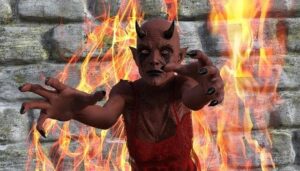
But in Helheim, the dead continued their normal routines from life. Archaeological remains show Vikings buried their dead with items needed in the afterlife, indicating it was seen as a continuation of earthly activities.
The terrible place called Náströnd within Helheim was likely the closest Norse equivalent to the tortures of Hell, where the dragon Nidhogg chewed on the corpses of the most wicked. But this was a small region – the majority of Helheim was simply cold, dark and misty, not filled with infernos of fire and brimstone.
While both underworlds are located downward and underground, reach into Helheim was difficult but achievable, whereas Hell was a point of no return. Gods like Odin and Hermod managed to enter Helheim and come back. Overall, Helheim was not defined by concepts of divine judgment, reward versus punishment, or a metaphysical war between good and evil. It was a more nebulous realm separated from the world of the living.
FAQs About Helheim
What did Helheim look like?
The physical description of Helheim is not well-defined in Norse mythology. However, it is commonly believed to be a dark and gloomy place, with a cold and damp atmosphere. The realm is also said to be filled with mist and fog, making it difficult to navigate.
In some accounts, Helheim is described as having nine levels, each one more treacherous and dangerous than the previous one. The lowest level is said to be the most horrible of them all, where the worst of the dead are punished for their sins.
Overall, Helheim is a bleak and desolate place, where the dead are doomed to spend eternity. It is a place of darkness and despair, where the only company one can find is that of other lost souls.
What did the dead do in Helheim?
It seems the dead spent their time in Helheim doing many of the same activities they did while alive – sleeping, eating, drinking, fighting, crafting, etc. Their experiences likely varied based on their personal conduct and preferences. We know the fearsome dragon Nidhogg gnawed on the corpses of the wicked in one part of Helheim.
Did the dead have physical bodies in Helheim?
The concept of the soul and afterlife was complex in Norse belief. But some sources suggest the dead did retain a sort of physical form in Helheim, capable of eating, sleeping, and fighting. Magical methods may have allowed the Norse to visualize their ancestors continuing a bodily existence in the afterlife.
Could you visit Helheim while alive?
It was possible for the living to journey to Helheim through difficult magical means, such as traveling down the world tree Yggdrasil. But it was extremely hazardous, and no one could leave once having entered Hel’s domain. Only the most courageous heroes ventured to Helheim in myths.
What did Helheim signify to the ancient Norse?
Helheim seems to have represented a sense of continuity – that the afterlife was an extension of one’s life and community. Being consigned to Helheim after death wasn’t seen as a reward or punishment but just the natural order. It likely provided a sense of community continuity even after death’s door.
Shop Norse Jewelry
Are passionate about Norse Mythology?
Finding the ideal piece of Norse Jewelry can be challenging and time-consuming, especially if you lack inspiration or don’t know where to look.
Surflegacy, has you covered. We have a wide range of Handmade Jewelry in various styles, shapes, colors, and materials, to accentuate your Norse spirit and look. Do not hesitate to visit our selection HERE
Whatever you wear, you’ll find the ideal trendy piece to complement your wardrobe. Our jewelry is designed to be worn every day, no matter where you go or what season is. Are you ready to step up your wardrobe game?


